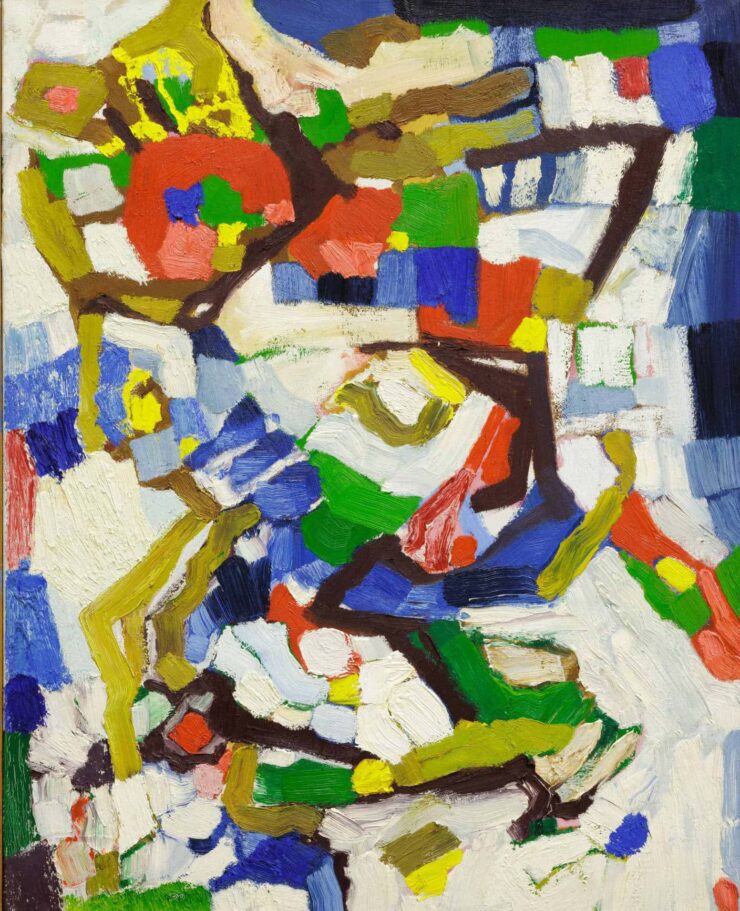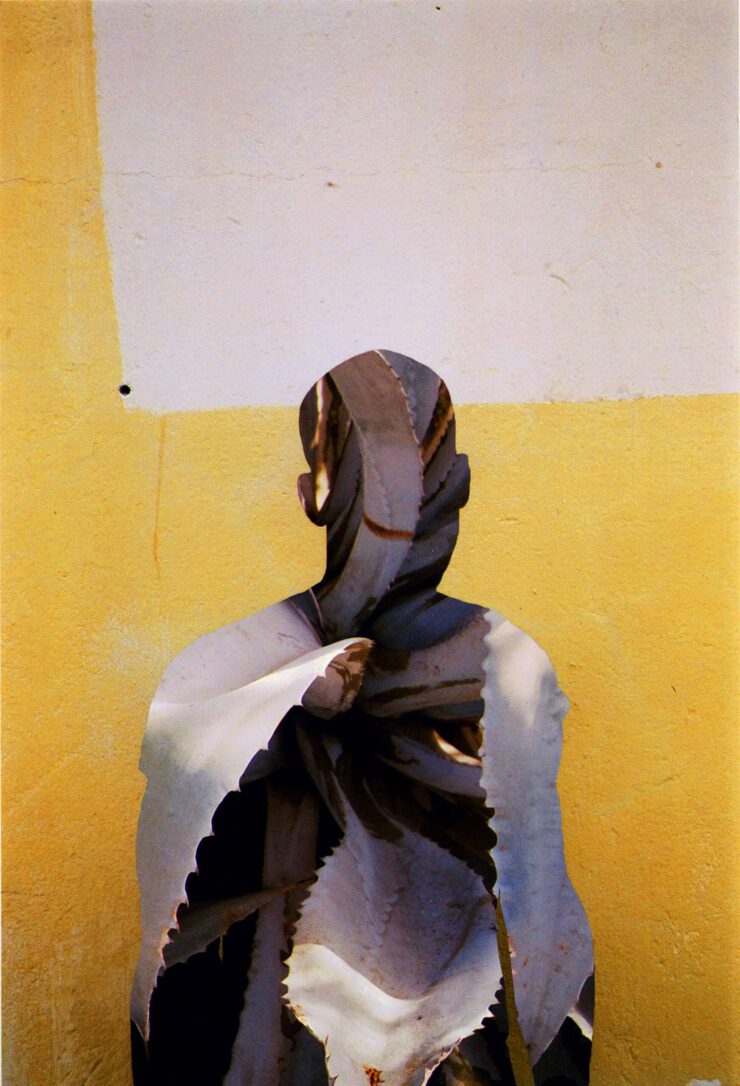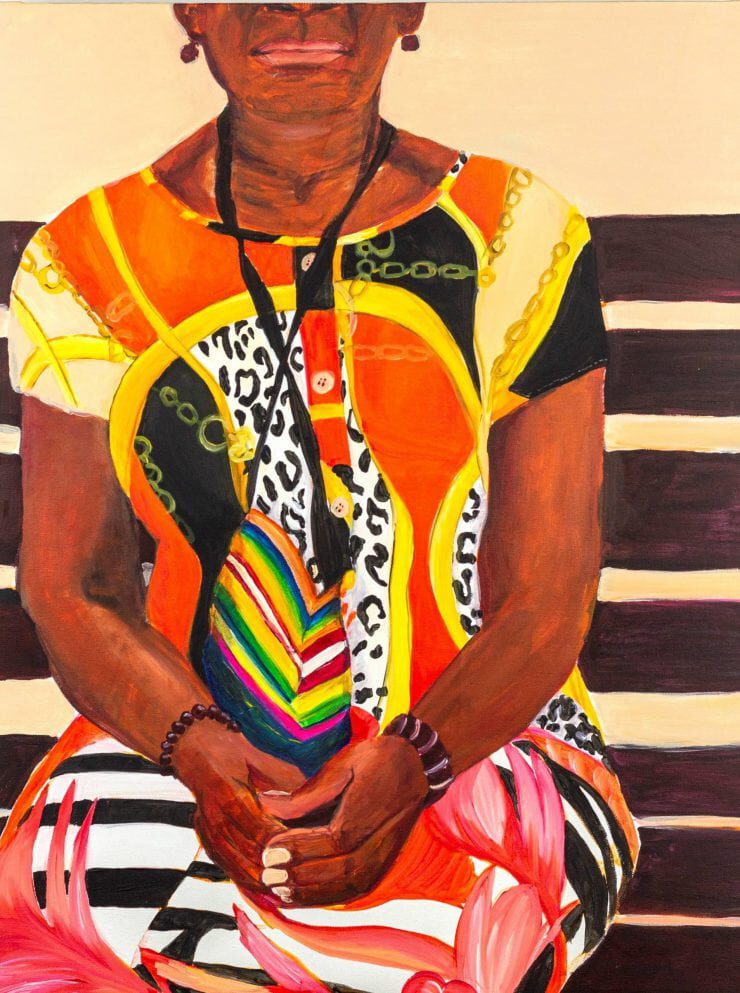Frieda Hunziker*
*A flight to Curaçao.
*A flight to Curaçao.
Stedelijk Museum Schiedam presents a major retrospective of the Dutch artist Frieda Hunziker (1908-1966). The exhibition Frieda Hunziker. A Flight to Curaçao tells the story of Hunziker’s trip to the island in 1951. While there, she found much inspiration; her abstract figurative paintings that dominated the war years gave way to freer, more colourful works. The exhibition combines Frieda Hunziker’s gaze, a visitor to the island, with that of artists observing the island from an insider’s perspective. Both then and now. Frieda Hunziker, a flight to Curaçao can be seen from 29 April to 3 September 2023.
Two months in Curaçao
In 1949, Frieda Hunziker took part in the exhibition Kunst in Vogelvlucht, an initiative of Willem Sandberg, then director of the Stedelijk Museum in Amsterdam, but co-sponsored by KLM. The exhibition featured works by various artists that were created after a sightseeing flight over the Netherlands. Hunziker’s participation in this exhibition earned her the opportunity to take a long-haul flight to a destination of her choice, paid for by KLM. She chose the island of Curaçao, which was still a Dutch colony at the time. She stayed there for two months in the winter of 1951-1952, lodging in the pavilion of the Curaçao Museum. Once there, she was amazed by the warmth, the colours and the nature. She drew every day – the colourful houses, the goats and cacti, and the rugged landscape. But she also found herself in the midst of a small community of artists, poets and musicians who, together, were developing their own vibrant artistic identity.

Frieda Hunziker, Carnaval, 1958. Particuliere collectie.

Gilleam Trapenberg, New Suns Series, 2020
Inspiration that lasts a lifetime
Her experience of the Caribbean island had a lasting impression on her work. On her return to the Netherlands, Curaçao motifs often reappeared in her paintings, but in a more pasty, abstract and colourful style. During the 1960s, Hunziker’s palette underwent yet another change, and her paintings became darker and more robust. In doing so, she followed in the abstract expressionist footsteps of contemporaries such as Karel Appel.
Frieda Hunziker, Landscape, 1963. From the collection of Stedelijk Museum Schiedam
The emergence of a self-aware art world
Hunziker’s work can be understood as an ode to the island. It is a loving yet romantic portrayal that revolves around nature and climate. Social realities are less visible in her work. Curaçao has a long and complex history of colonisation. In 1954, Curaçao became politically autonomous, along with the rest of the Netherlands Antilles. This was preceded by centuries of colonial rule, first at the hands of the Spanish from around 1500 and then under the Dutch West India Company (WIC) from 1634. In 1791, following the bankruptcy of the WIC, Curaçao became a Dutch colony. For centuries, the island was a major hub in the transatlantic slave trade. Today, Curaçao is an independent country that forms part of the Kingdom of the Netherlands. While it is a tourist destination for many, countless Curaçaoans have emigrated to the Netherlands to make a living. The island’s complex history of oppression, trade and exploitation continues to make its presence strongly felt in life on Curaçao. The exhibition reveals the evolution of an art world on Curaçao in the late 1940s, initially closely linked to the Netherlands but at the same time very self-aware.
Contemporary interventions
To highlight contemporary developments, the exhibition also features interventions with works by artists who reflect on contemporary life in Curaçao from an insider’s perspective, such as Serana Angelista, David Bade, Carlos Blaaker, Eugenie Boon, Avantia Damberg, Tirzo Martha, Shertise Solano and Gilleam Trapenberg. They depict the multi-layered relationship a person can have with a place, through loss, distance and complex memories and relationships. The exhibition also shows the island through the lens of the rich diversity of the inhabitants of the Otrobanda district, a place in Curaçao that plays a special role in the current artistic climate.

Serana Angelista, Paradox Paradise. Voorbijganger, 2016.

Eugenie Boon, Luangu, 2021. Collectie Stedelijk Museum Schiedam
Schiedam residents and Curaçao
To coincide with the exhibition, the museum is conducting interviews with young people from Schiedam with roots in Curaçao about their perceptions of the island. The conversations will culminate in audio fragments that will form part of the exhibition, as well as a short presentation that will run parallel to the exhibition, revealing how Curacaoan Schiedam residents see their island. The conversations are part of the Stedelijk Museum Schiedam’s co-creation and participation programme ‘My Schiedam’, in which the city’s residents contribute ideas for the museum’s programme, which they then create together.

Image above: Tarona
The exhibition is made possible thanks to contributions from:
Gemeente Schiedam, Prins Bernhard Cultuurfonds, Fonds Schiedam Vlaardingen, the Ministry of Education, Culture & Science, De Groot Fonds, Zabawas, VriendenLoterij Fonds, Elise Mathilde Fonds, Gravin van Bijlandt Stichting and the Erasmusstichting. The exhibition at the Stadsgalerij is part of Mijn Schiedam and is made possible thanks to contributions from Fonds 21, Mondriaan Fonds, VSB Fonds and VriendenLoterij Fonds.